Things to do in Oxford | One Day Itinerary
Oxford, Oxfordshire is definitely one of the most famous and charming cities in the United Kingdom. Is the hype overrated? Heck, NO! There are a plethora of things to do in Oxford for people of all ages and with a train, bus and car access, it is the perfect city for a hassle-free day trip from whatever part of England you’re in.
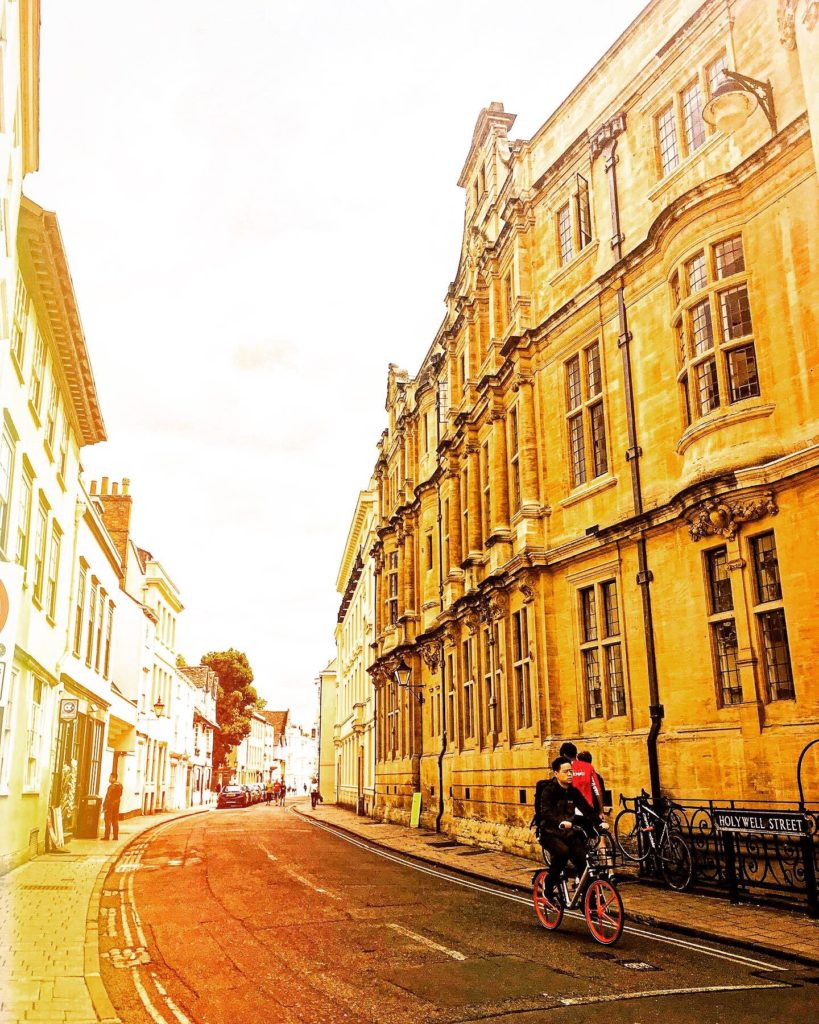
The last time I was in Oxford, I spent the entire day attending the university’s Open Day. I went to all the English and History lectures, worrying about which college I’d end up applying to. In the end, I didn’t go to the University of Oxford, so ultimately all that stress was for nothing. Anyway, it was nice to go back as a university graduate and get to see all the noteworthy sites and to experience the new and fun hidden gems.
The city features the renowned golden stone that gives it a quaint and frozen in time character. The cobblestone streets map and bring to life the original medieval footprint. Whilst there are also exquisite parks, alluring architecture, phenomenal food and huge tons of history! I was really taken aback by all of this, Oxford’s beauty and old-fashioned ambience really shone through.
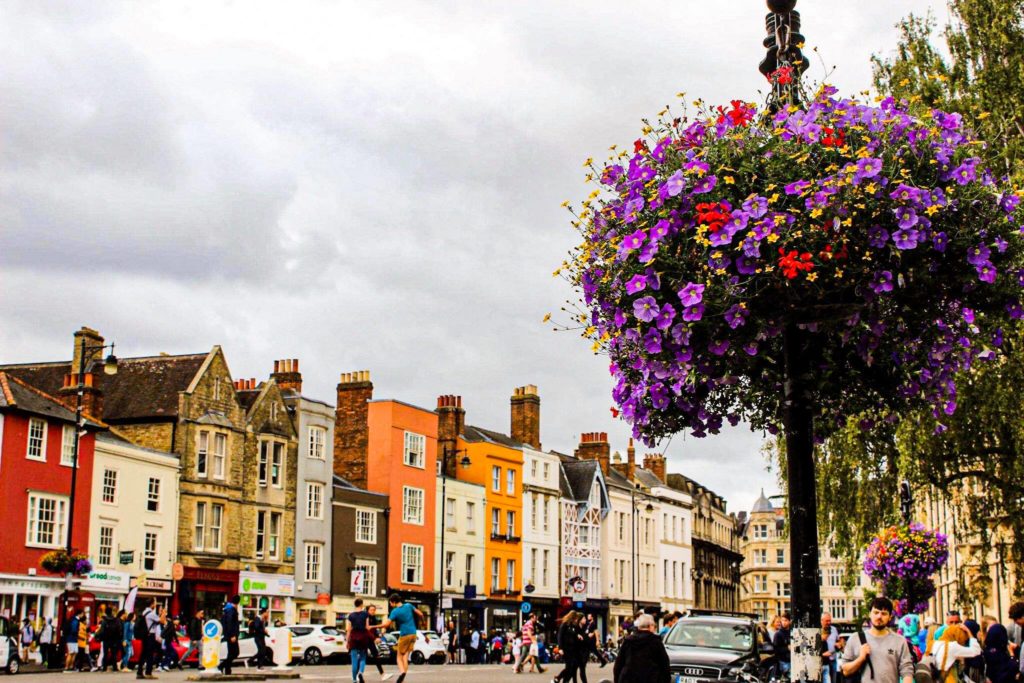
Things To Do In Oxford’s Broad Street
Shopping, Walking Tours & Harry Potter
After we arrived in Oxford, we walked to Broad Street. I loved this area because it featured colourful buildings, stunning architecture and numerous parked bikes. It really made me feel in the city’s buzz.
First, you cannot miss Broad Street. Traditionally known as ‘The Board’, it is a very wide street in central Oxford. If you can, I recommend trying to park here as it is super convenient. The street is known for its bookshops, including the original Blackwell’s bookshop. Blackwell’s opens to four floors including the underground Norrington Room which is a whopping 10,000 square feet. The Board also features the Sheldonian Theatre, the Harry Potter inspired ‘The Shop of Secrets’ and it is the meeting place for Oxford Walking tours and the Visitor Information Centre.
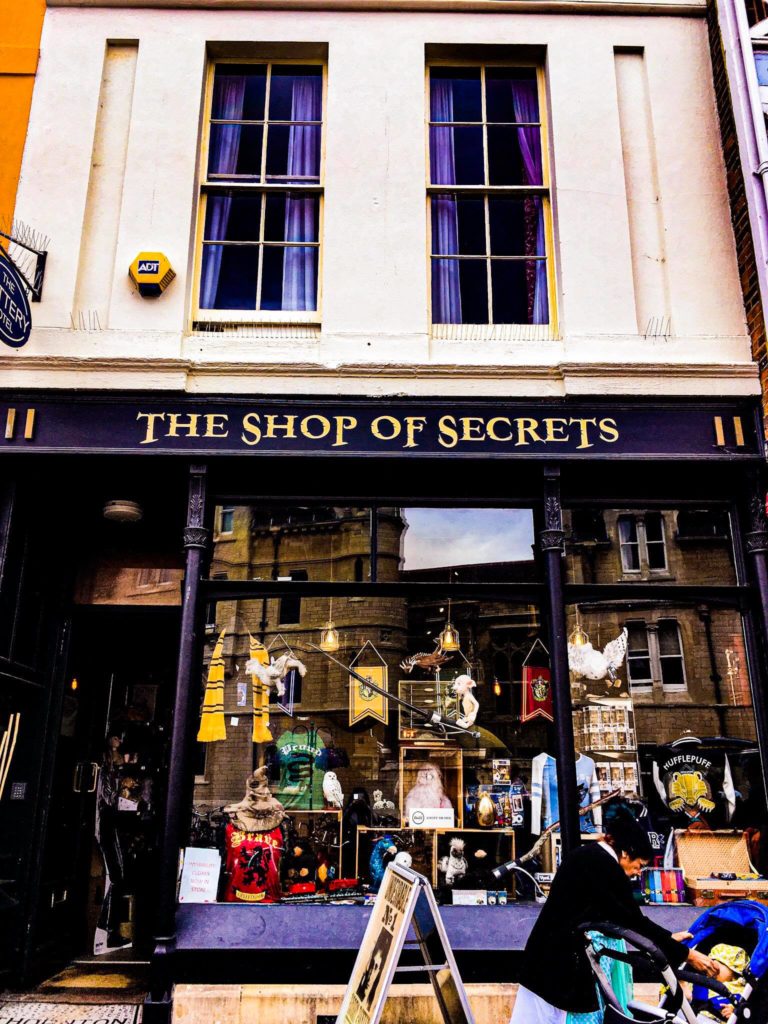
The Symbol Of Protestant Martyrs
Not only does the street hold all these attractions, but its conception holds significant historical importance. Created in 911 AD, Broad Street acted throughout history as the ‘centre’ of town. And like most town centres, it saw political, social and economic trials. As a result, this brought peasants and gentry alike to undertake financial transactions, meet new acquaintances and to see justice and the law carried out.
The latter reference has remained a core factor in the Streets history. Broad Street is where the Protestant Oxford Martyrs, Hugh Latimer and Nicholas Ridley on October 1555 and later Thomas Cranmer in March 1556 were burnt at the stake. A cross of granite is set in the road opposite Balliol College to mark the location. I don’t know about you, but the cross of granite fascinates me to no end. The cross reveals so much about the city. It showcases Oxford’s instrumental role in defining the England that we know today. The city helped cut off the heads of religious disagreements and forced our society to blindly adopt and follow the faith of the reigning monarch. Can you imagine just how different our England could be today if those events didn’t happen?

Things To Do In Saxon Oxford
I also couldn’t wait to see The Saxon Tower on Cornmarket Street. This building is the Church of England parish church of St. Michael at the Northgate. It is also the oldest standing building in Oxford. Dating from around 1050, the church is named after and marks the position of the city’s old North Gate.
Security and Endurance:
What I particularly like about this tower is that it is one of the last remaining physical evidence of Saxon Oxford. In the 9th-century Alfred the Great created a network of fortified towns called burghs across his kingdom. One of these was obviously Oxford, and the materials used to build the Saxon Tower reveal how Oxford was not only a market town but also a fortress. The tower is built from rubble and its cold facade gives the impression that its main function was security and endurance. This would have been a source of comfort to the locals in the event of war with the Danes or more commonly known as large, scary Vikings!
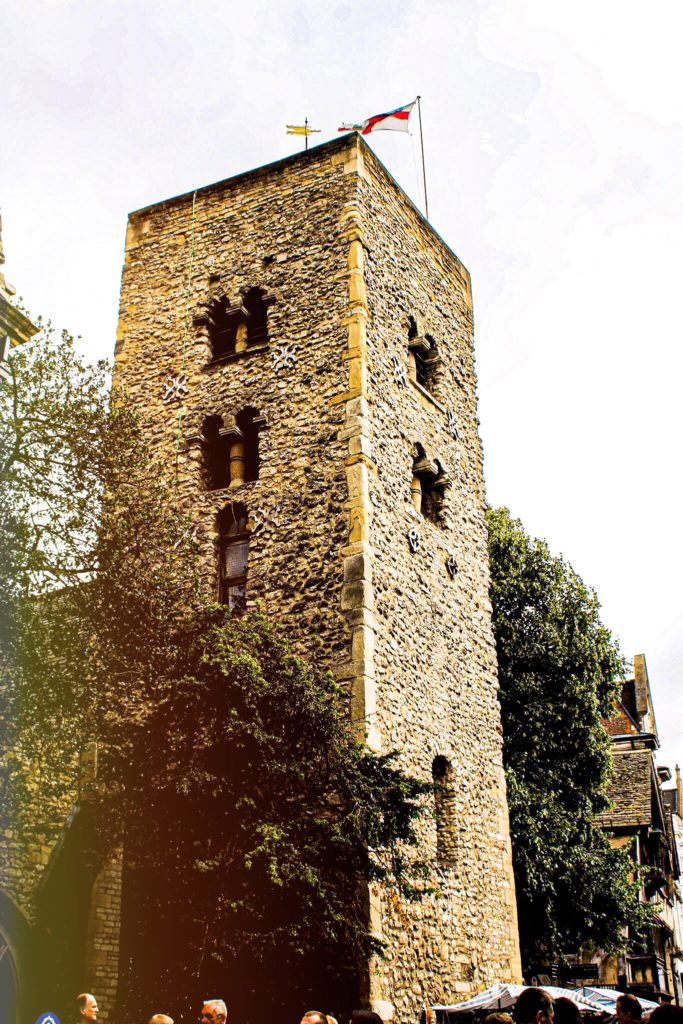
In addition, this Saxon building is quite unique. Most Anglo-Saxon buildings were made of wood, so it is a rare find. And as a side note, if you were intrigued by the Oxford Martyrs, then you’d like to know that the church played a vital role in that event. It was the church who imprisoned the Martyrs in Bocardo Prison and their cell door can be seen on display in the church’s tower.
A Snapshot of Medieval Oxford
I didn’t know before going down this street that here was a 14th-century timber-framed building. I guess this is the beauty of ambling around a new city, you really come across some hidden gems. And for a snapshot of medieval Oxford, you can’t do much better than 24-26 Cornmarket Street. It was built for a wine merchant who ran it as the New Inn and it kind of reminds me of Hogsmead in Harry Potter. Anyone else sees that?
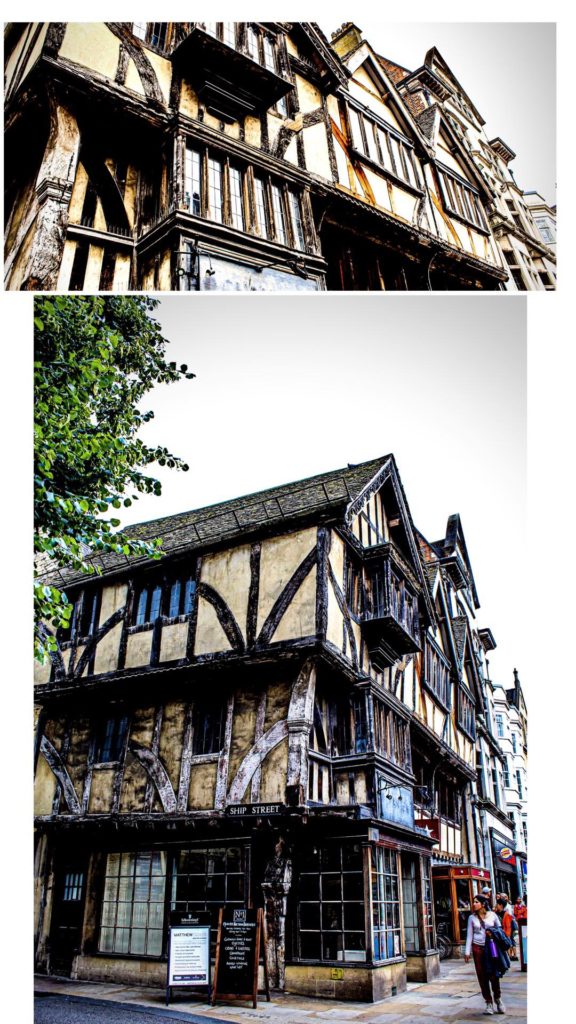
If you’re in Oxford for a day, then I would highly recommend visiting this place. The 14th-century architecture is typical of British cities at the time and that is why the building sticks out from the ordinary. It is also a wonder to behold; the building seems to be wonky or slopping forward. This is actually typical for this style of building. It becomes gradually wider with every story as a way of maximising floor space without needing to buy more land. Fun fact, this style of building on such narrow streets meant that the overhang was considerable enough that householders could reach out of the top-floor window and shake hands with their neighbours from across the road.
Food In Oxford
Just like every other city in the U.K., Oxford has a plethora of amazing options to choose from when it comes to food. One place that I highly recommend is Pauls. A Bakery, Patisserie, Café and Restaurant, there is an incredible selection of fresh and hand-crafted food. The sandwiches (that are straight out of the over) are to die for. They really take the idea that lunch should be savoured, not just eaten, to the next level!
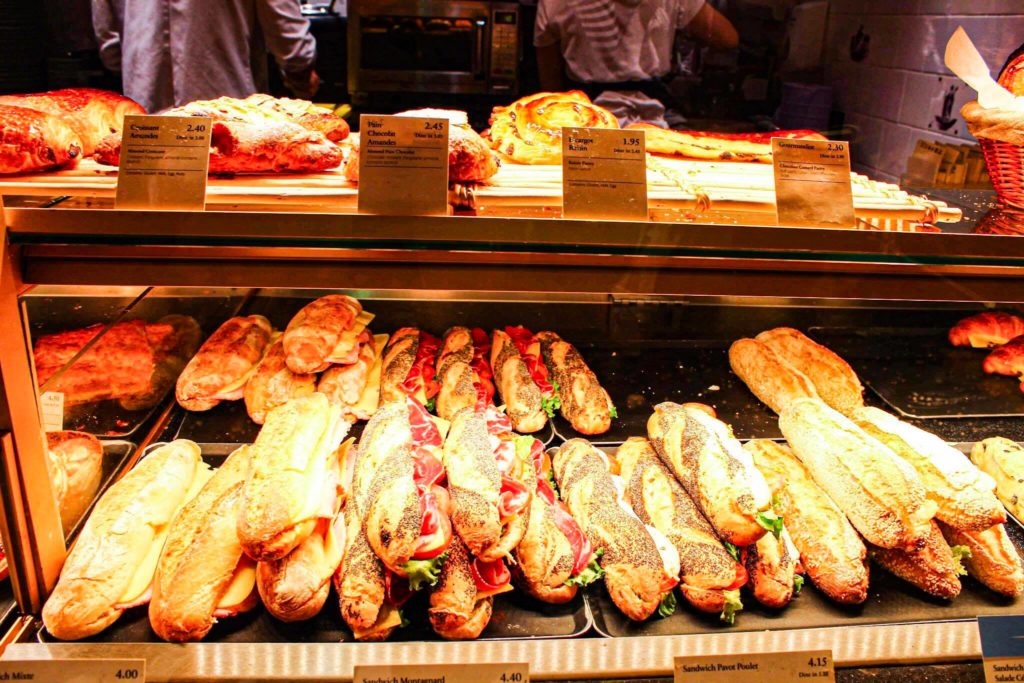
Located in the Centre City of Oxford is a wide range of other great restaurants such as All Bar One, Pizza Express, Wagamama and The Varsity Club. The Varsity Club is an incredible 4-level venue with a cocktail lounge, a nightclub, and a rooftop lounge with skyline views of the entire city. Perfect for a relaxing summer afternoon! They all serve nutritional and deliciously varied menus and are perfect for a relaxing lunch or pre-theatre or pre-nightlife dinner.
University Church of St. Mary the Virgin & University Colleges
The Church of St. Mary is situated on the north side of the main high street. I would definitely recommend visiting here as it is the centre from which the University of Oxford grew. Its parish consists almost exclusively of university and college buildings. It possesses an eccentric baroque porch and a decorated spire that is one of the most beautiful in England. The Towers’ triple-gabled outer pinnacles, gargoyles and statues dating from the 1320s inspired and awed me.
Outstanding Panoramic Views:
If you’d like to experience a panoramic view of Oxford’s rooftops, then I can’t stress enough that you should climb the church’s tower. There is a small fee to climb, but it is worth it. At the top, you’ll see the heart of the historic university city, especially Radcliffe Square, the Radcliffe Camera, All Souls College, and Brasenose College. This really is the best way to see a lot of things and check them off your to-do list if you’re short of time.
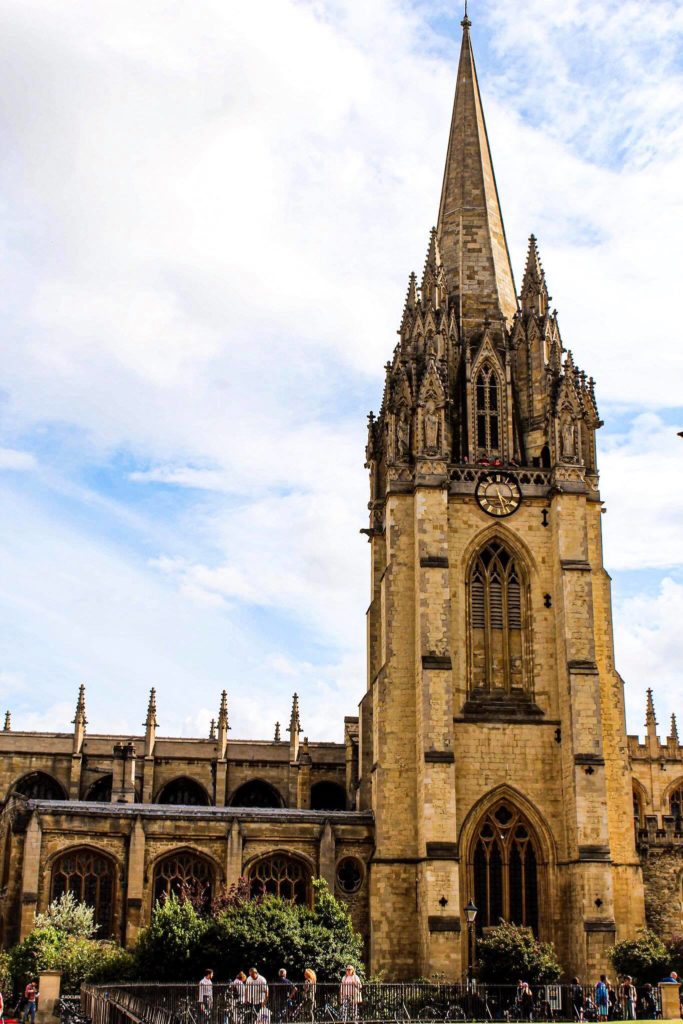
Why Is The Church So Special?
The church was established on this site at the centre of the old walled city in 1086. In the early days of Oxford University, the church was adopted as the first building of the university. From then on, the congregation met there and by the 13th-century it became the seat of the university government. Much later in the 16th-century, St. Mary’s was the site of the 1555 trial of the Oxford Martyrs. One of the nave pillars, known as ‘Cranmer’s Pillar’ has a notch cut into the stone. This was cut to support a wooden platform during the morning of his trial when he was brought to the church for a sermon from Henry Cole. On Mary I’s instruction, Cole spelt out the reasons Cranmer must die. This pillar is incredible to see, it wonderfully preserves a moment of history for generations to see!
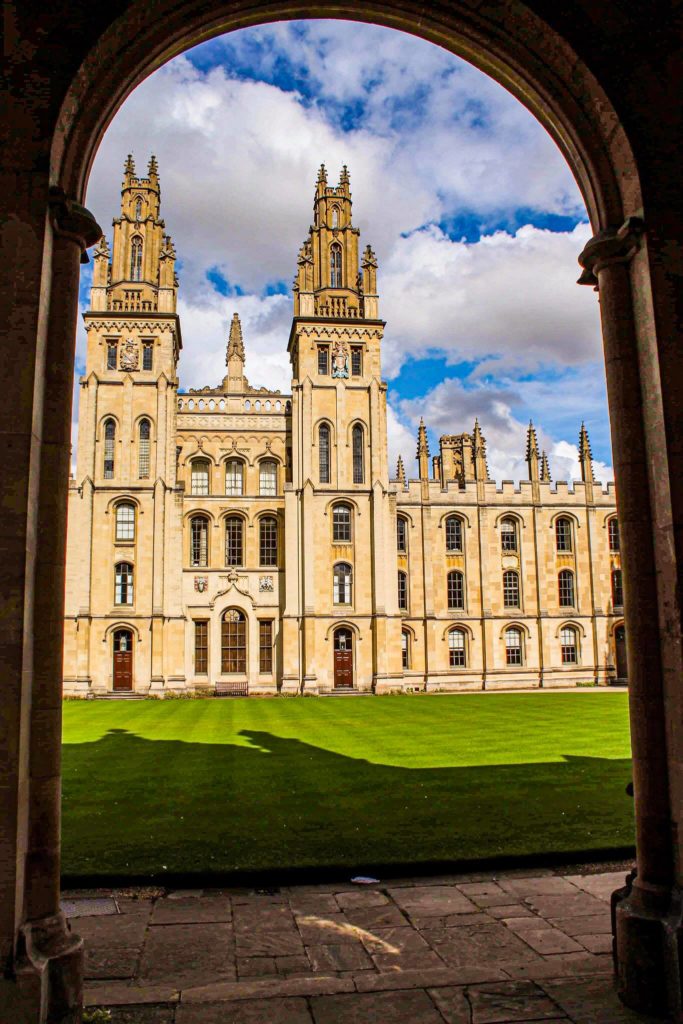
Things To Do In Oxford & Its Bodleian Library & Radcliffe Camera
When we finished seeing the church and strolling around Oxford Colleges, we headed over to the Bodleian Library. Since the whole reason, we went to Oxford this time around was to take a tour of the library I was understandably super excited. There are a plethora of tours available, ranging from 30 to 90 minutes. We decided to take the 90-minute tour. This allowed us to explore the Divinity School, Convocation House, Upper Reading Room, Radcliffe Camera, and Duke Humfrey’s Library. It was wonderful to see the historic rooms in contrast to the modern underground reading room.
The Divinity School:
The Divinity School is a splendid medieval room in Perpendicular style with the most incredible and elaborate ceiling. Built between 1427 and 1483, it is the oldest purpose-built building for university use. It was used specifically for lectures, oral exams and discussions of theology. I loved this room because of its associations with the Harry Potter movies. If you’re a lover of architectural beauty, a fanatic reader or crazy about J. K. Rowling’s masterpiece novels, then you’ve got to see this chamber.
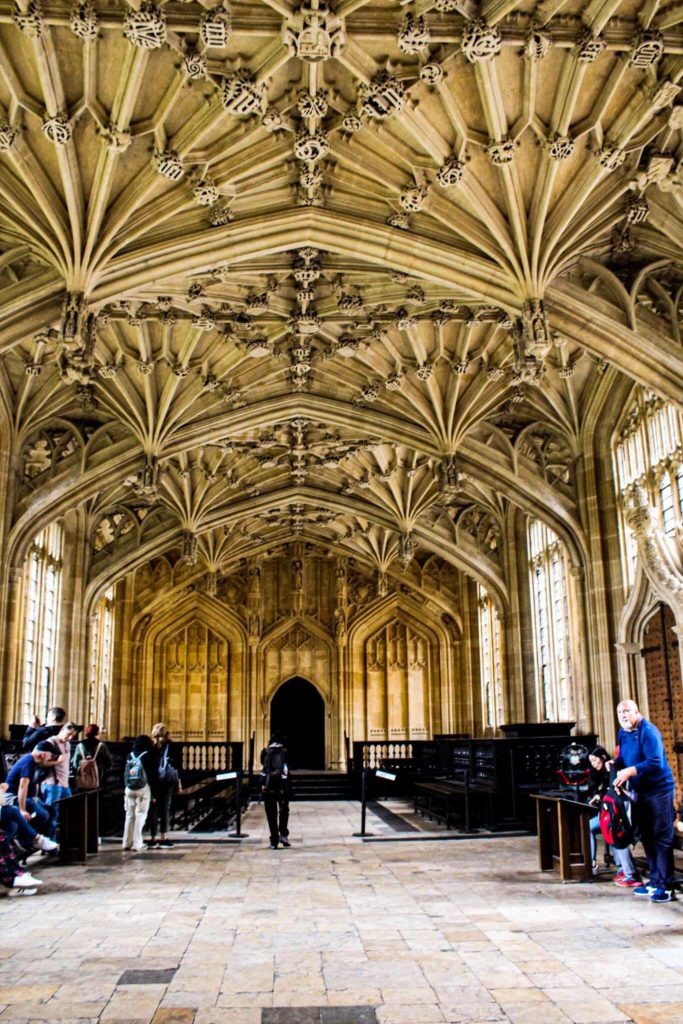
The Convocation House:
Next, our tour guide took us to the Convocation House. Now, this is my favourite room out of the entire building. There was something magical about its ceiling. Looking up, it felt almost like the ceiling was jutting out and encircling you. In addition, the juxtaposition between the yellow-orange tinted ceiling with the jet black wood visually represents the power and authority behind those who use the room. Most notably, during the reign of Charles II, the chamber was selected as the home for the Royalist Members of the English Parliament. Additionally, in 1664 the House of Lords met here and later on, Nelson Mandela received his honours degree in this room, which I found impressive.
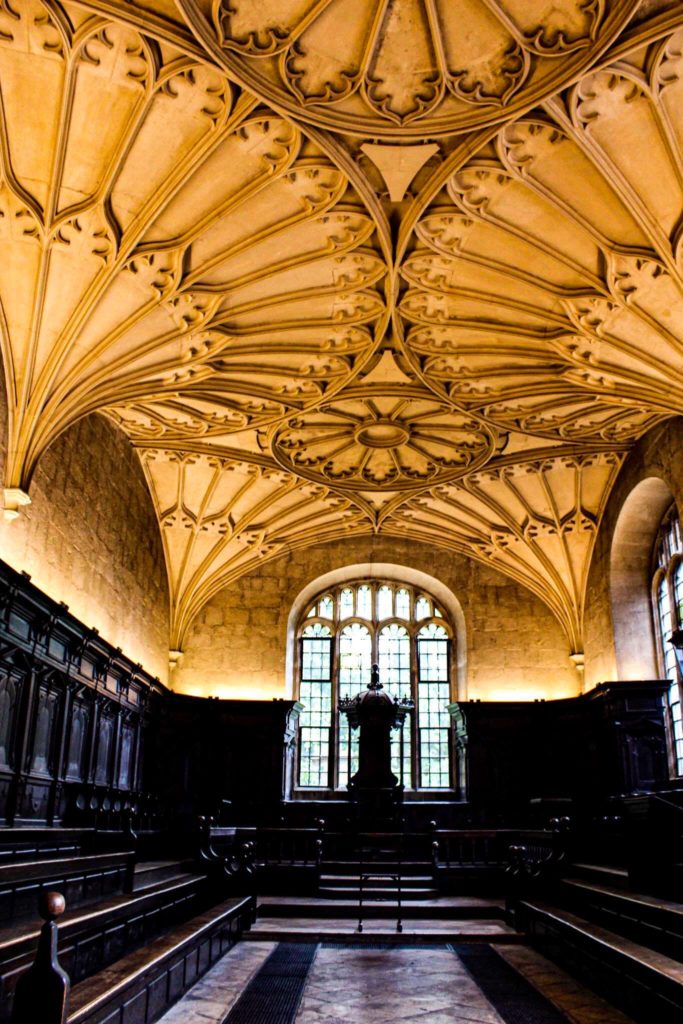
The Upper Reading Room:
Sadly, I wasn’t allowed to take any photos of the Upper Reading Room on the second floor of the Old Bodleian Library. It is the principal research reading room for books and periodicals published after 1640. Subjects such as Medieval and Modern History, History of Science and English Language and Literature are in these books and periodicals.
The Radcliffe Camera:
Our last stop on the tour was the inside of the Radcliffe Camera (a term that means room) and its underground modern reading room. When I say underground, I mean underground – you go right under the cobblestone walkways. The size of the building really impressed me; it’s like a rabbit warren, holding around 220,000 books and some 21,000 manuscripts.
Who Funded The Radcliffe Camera?
It was funded from the estate of John Radcliffe, a doctor who left £40,000 upon his death in 1714. Moreover, it was designed by James Gibbs and his circular domed Radcliffe was the first such library of its kind in Britain. It has been towering over passers-by for over 200 years. Knowing that made me feel even more privileged to go inside.
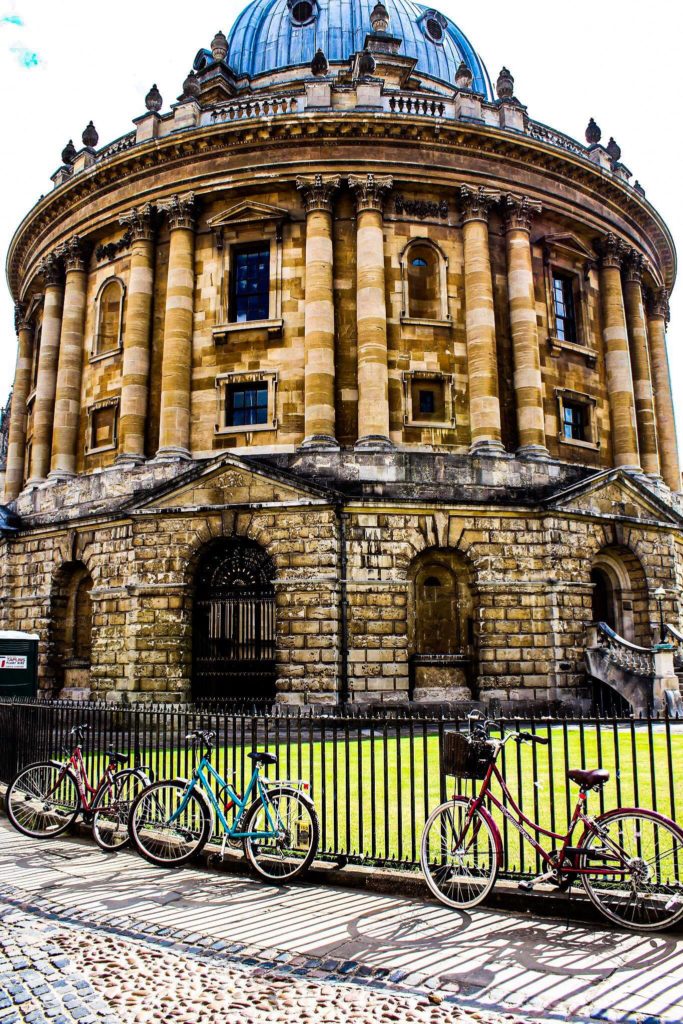
However, if you don’t do the 90-minute talk, unfortunately, you won’t be able to go inside Radcliffe. Like much of the university buildings, the Radcliffe is open only to students and faculty members. But in a city filled with landmark buildings and stunning architecture, the neo-classical style, dating back from 1737 to 49, stands out from all the others. It is quite something to behold. The building is majestic and worth just looking at and taking a billion photos.
The Last Thing To Do In Oxford, The Bridge Of Sighs
Once we had finished our tour of the Bodleian Library, we were all starving and thirsty so we made a beeline to the nearest pub. But fortunately for us, this meant going past the ‘The Bridge of Sighs’, or otherwise known as Hertford Bridge. It is probably one of the most identifiable architectural landmarks that people associate with Oxford. The bridge links the Old and New Quadrangles of Hertford College. Much of its current architecture was designed by Sir Thomas Jackson, and it was completed just before World War One in 1914. This distinctive Oxford attraction provides a popular photo spot which, of course, I did not miss.
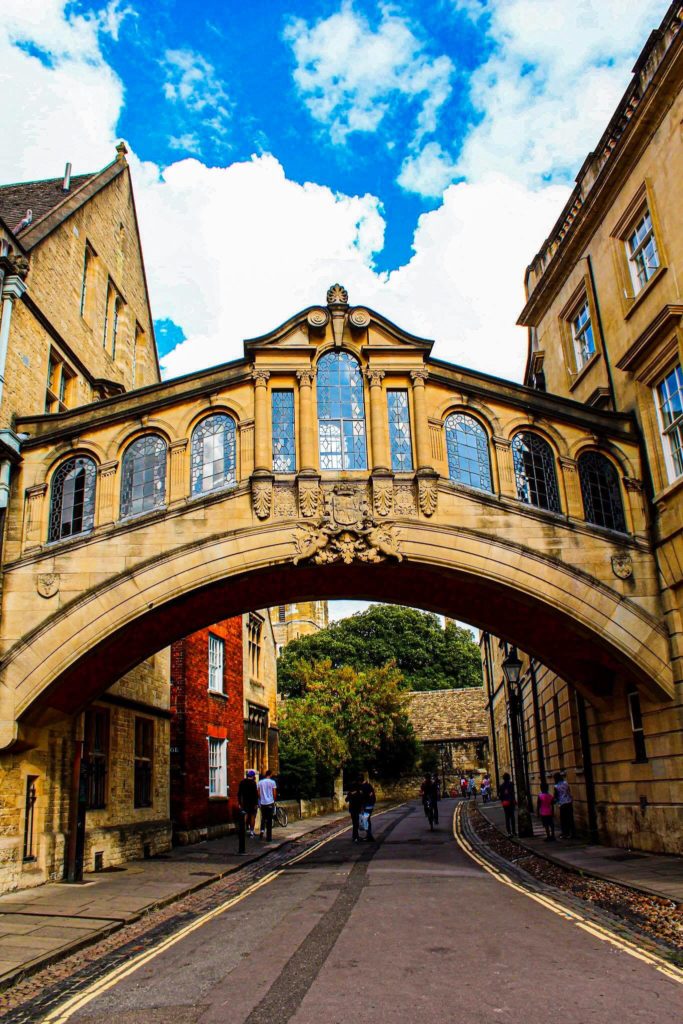
Dinner in Oxford
Before we departed the city, we headed back to Broad Street and stopped off at The King’s Arms for a spot of tea and dinner. Even though there are hundreds of amazing pubs in Oxford, we ended up here because they allow dogs and it was close to our car. This pub is one of the most famous pubs in Oxford and it was in keeping with our theme of the day, history. It is the oldest pub in Oxford, built in 1607, and it is still standing in its original position.
If you’re looking for a traditional English menu, then this is the place for you. Personally, I really enjoyed the Green Tea they served. I indulged and had two teapots. It really was the perfect way to end our day trip. But then again I always say drinking tea is the best way to end the day.
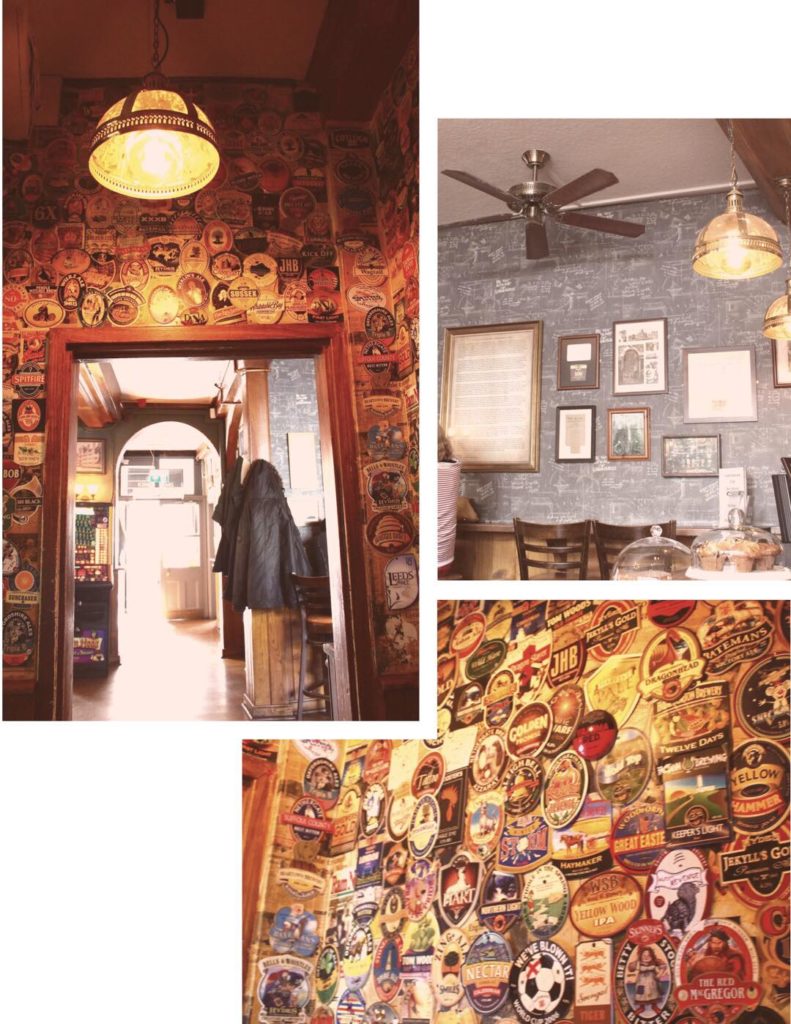
I hope you all enjoyed reading my city guide to Oxford and that it helps you plan a day trip full of fun and that it is hassle-free. If you have any questions regarding my day trip to Oxford, please feel free to reach out to me.

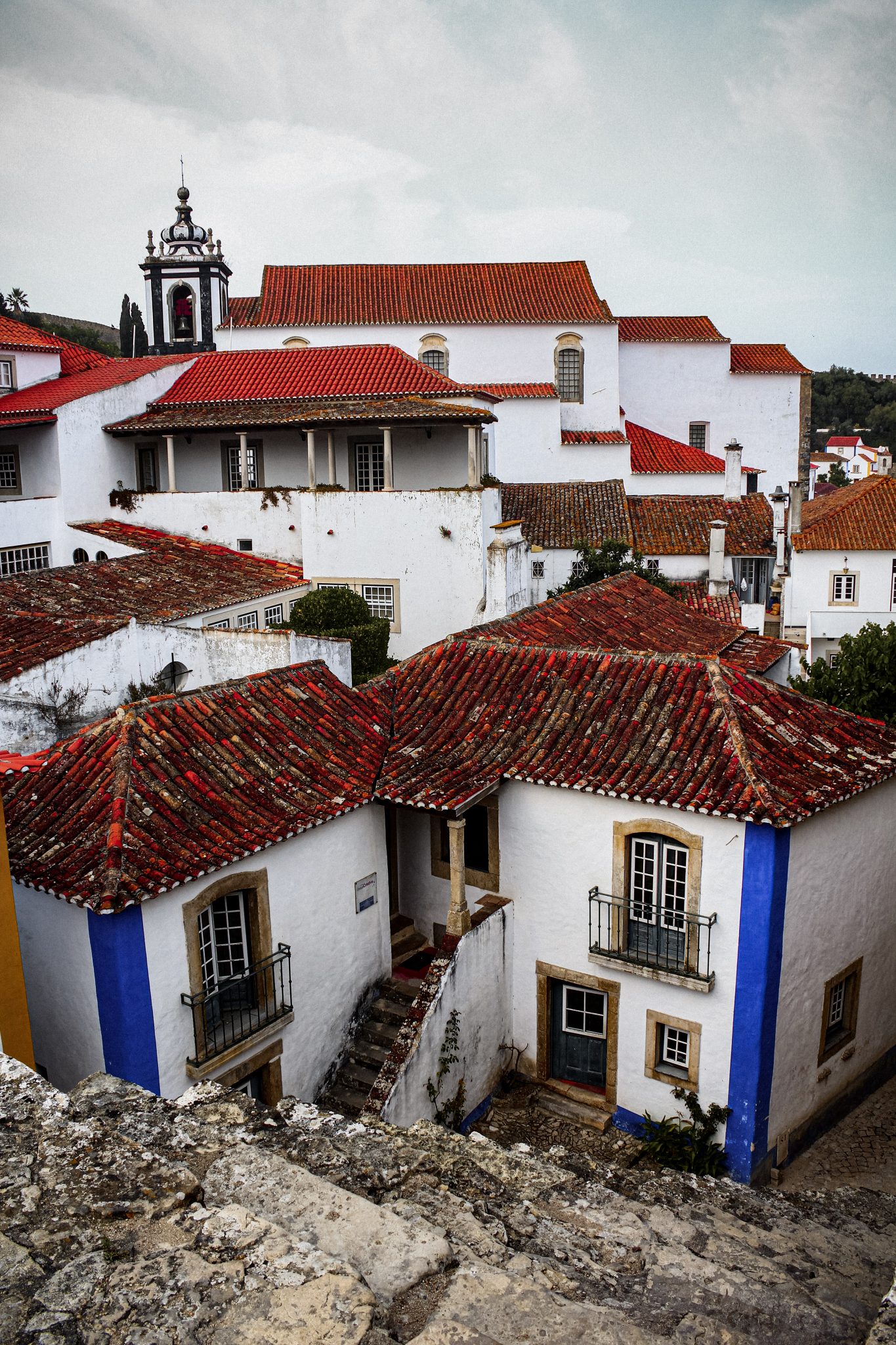
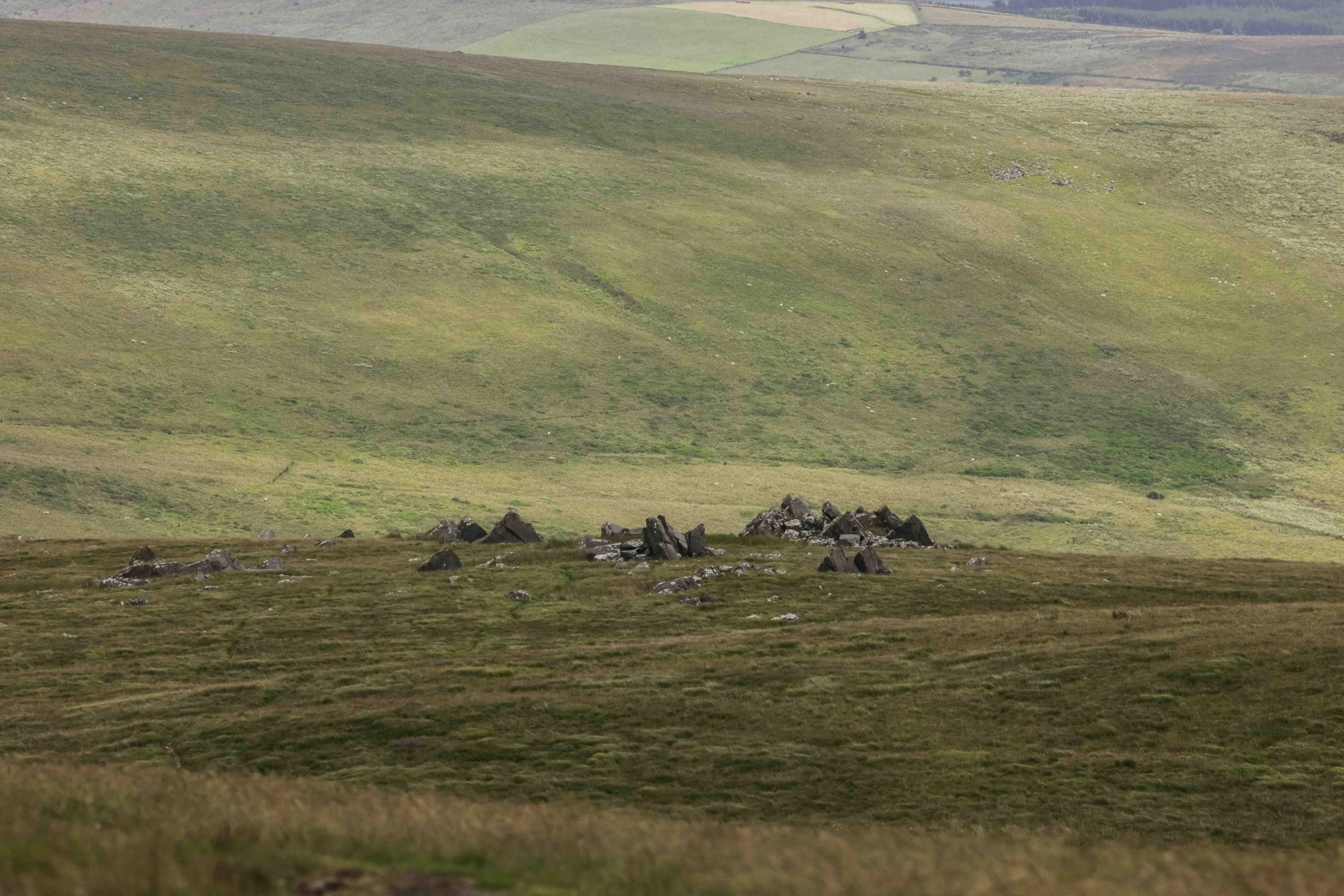
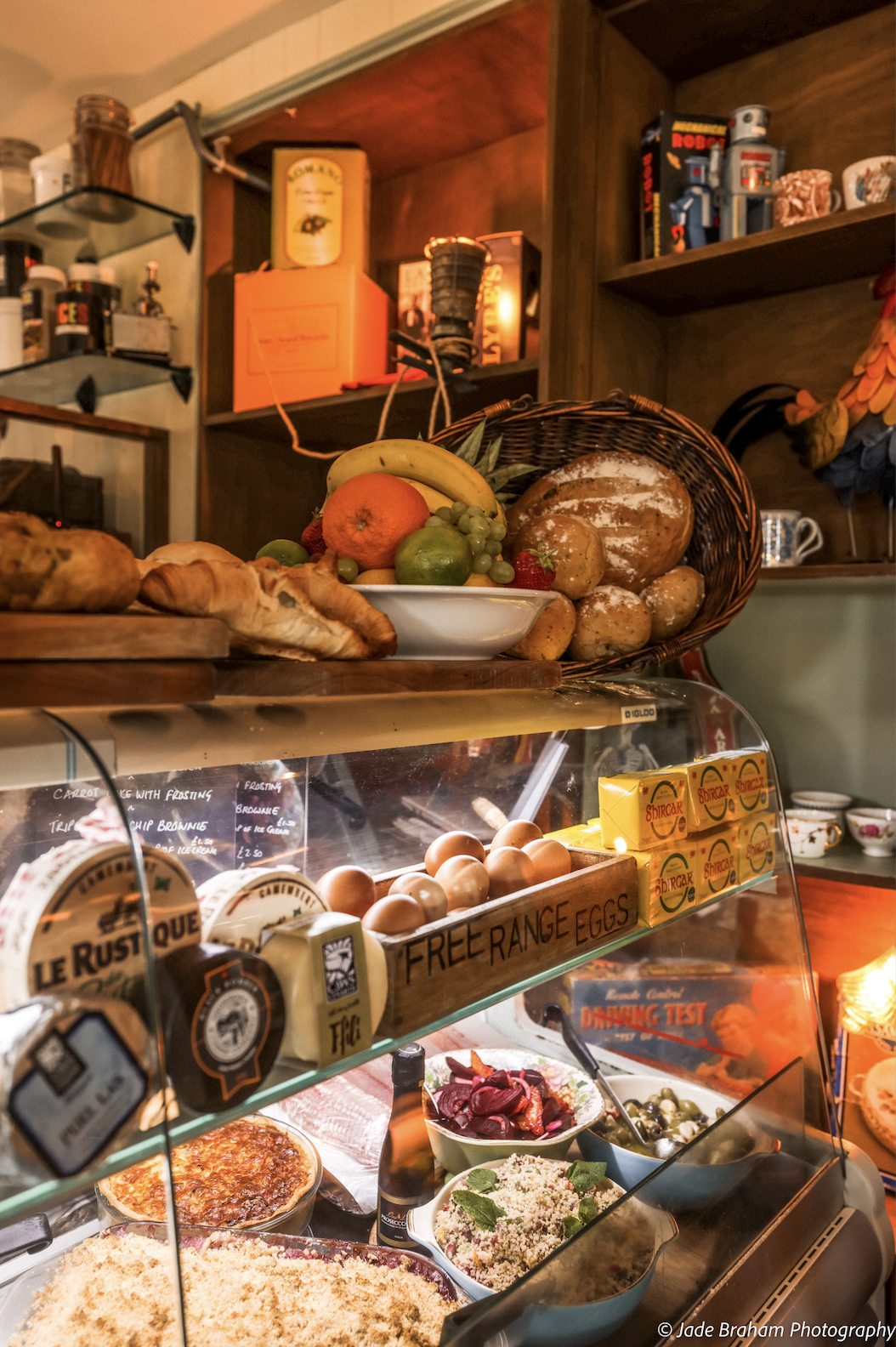
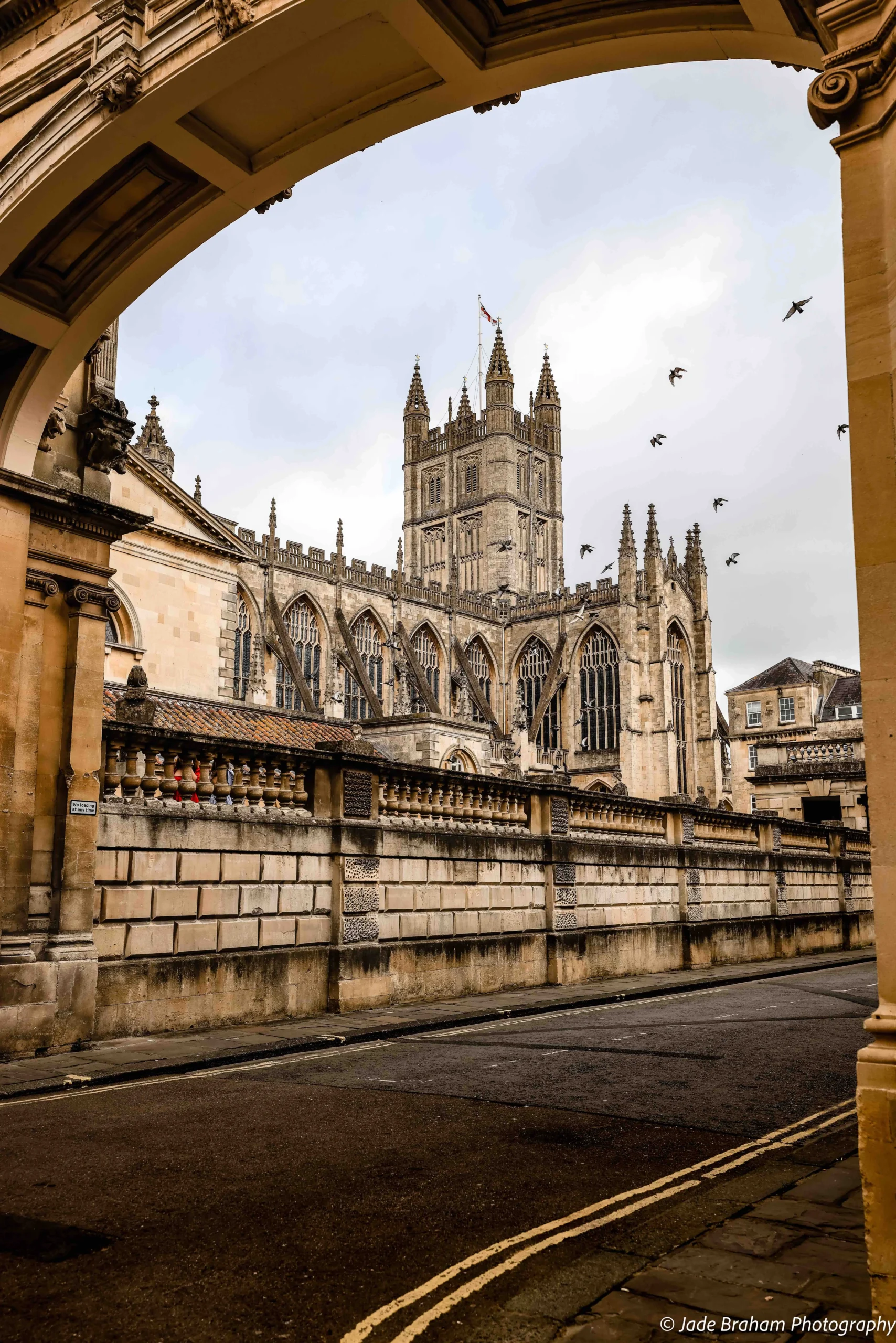
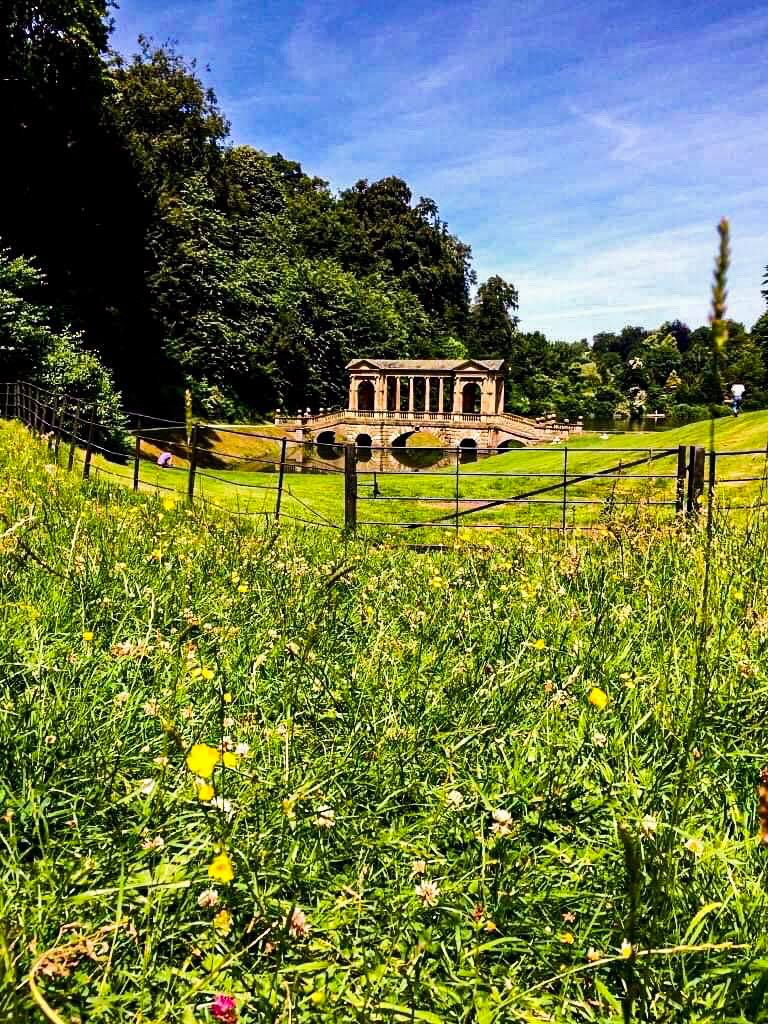

The Church of St. Mary is an awesome sight to see! It looks so majestic on the outside, and I can only imagine how grandiose the interiors would be! I wish I could visit Oxford and see all these sights in person!
This was an interesting read and the pictures just make the place come alive. Loved the over arching and hand shake tidbit though
Great post! I loved all your pictures and especially the rib vaulted ceilings 🤩
Wow! That’s really amazing– there’s quite a number of things to do in Oxford no doubt. I really wonder what England would be like if those changes didn’t take place. And the physical evidence of Saxon Oxford is just amazing. Can we talk about those sandwiches and pastries? Yummy!
Oxford is incredible, it is full of so much history that we sometimes forget shaped the UK we have now. Honestly, if you go to Oxford go to Pauls, the food is as good as it looks 🙂
Wow! Never new the area is so colorful. Even the food are so enticing because of the color mix.
I know right! Everything in Oxford is like stepping into a fairytale, it’s a really magical place!
Great photos! The scenery is majestic on Oxford. Thanks for reminding me of this lovely place… must must visit again!!
Oxford is amazing place to visit. I would love to visit there sometime. Thanks for sharing.
I hope one day you get to go! If you do, let me know how your trip went!
Looks like you had an amazing time in Oxford. so many fab ideas of what to see and do xx
Thank you so much! I had a fantastic day. I could’ve written a lot more about it too 🙂 xx